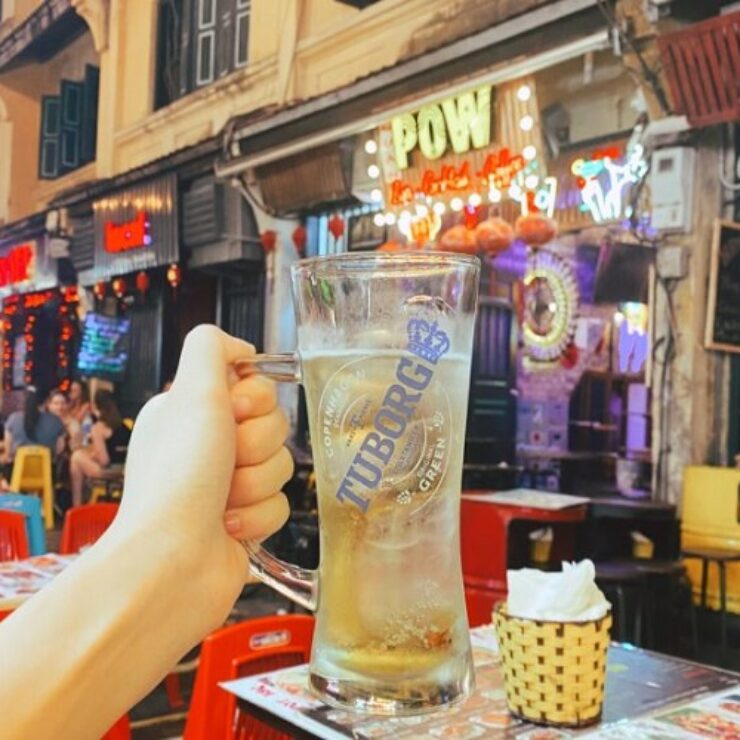ハノイの旧市街の中心部に位置する白馬寺は、この街の豊かな文化遺産において大きな意義を持つ、注目すべき歴史的建造物です。ハノイ最古の寺院である白馬寺は、古代の神々や王の伝説や物語と絡み合った、何世紀にもわたる魅力的な歴史を誇っています。この総合ガイドでは、白馬寺の魅惑的な物語を掘り下げ、その建築のハイライトを探り、この神聖な場所を訪れるための実用的な情報を提供します。
I. 白馬寺の歴史
白馬寺は「白馬寺」としても知られ、もともとは 9 世紀に建てられ、ハノイの古代の神であるロン・ドに捧げられていると考えられています。伝説によると、この寺は、1010 年にリー・タイ・ト王が首都をホアルーからタンロン (現在のハノイ) に移転するという決定に重要な役割を果たしました。
歴史の記録によると、リー・タイ・トー王は新しい城塞を建設する際に多くの困難に直面しました。しかし、寺院から白い馬が現れ、歩き回って地面に跡を残したことで運命が変わりました。これを神の兆しと受け止めた王は、馬がたどった道に沿って城壁を建設するよう命じ、最終的に首都の完成に至りました。この縁起の良い出来事を記念して、寺院は「白い馬」を意味するバク・マーと改名されました。
II. 白馬寺の建築
白馬寺は、阮朝の影響を反映したユニークな建築様式を誇っています。寺院のレイアウトは漢字の「三」の形に設計されており、外観はホイアンの美術を彷彿とさせる複雑な古代の模様で飾られた 8 つの屋根を持つ共同村の家に似ています。
寺院の内部も同様に魅力的で、彫刻の施された柱や木の梁がノスタルジックな壮大さを醸し出しています。注目すべき建築要素の 1 つは、鉄木で作られた型破りな梁構造です。これは装飾芸術としてだけでなく、寺院の構造的支えにもなっています。訪問者は、精巧な彫刻で飾られた多数の祭壇や、絵画、皇帝の称号、古代の武器、石碑、金属の鐘、かごなどの貴重な骨董品のコレクションにも驚嘆するでしょう。
III. 白馬寺の散策
白馬寺を訪れると、古代の彫刻芸術を鑑賞し、この神聖な場所の静かな雰囲気に浸るユニークな機会が得られます。寺院は年間を通じて訪問者に公開されていますが、白馬寺を体験するのに最も魅力的な時期は、太陰暦の2月12日から2月13日まで行われる毎年恒例の伝統的なお祭りの時期です。
このお祭りでは、かごの担ぎ手、ユニコーンの踊り手、太鼓をたたく人、旗を振る人などの行列が、馬明通りから白馬寺まで戻ります。この儀式のハイライトは、祭りの重要な部分である犠牲の儀式であり、厳粛に行われます。主な儀式が終わった後、訪問者は寺院に入り、綱引き、闘鶏、人間チェス、祭りの歌の競争など、さまざまな文化活動やベトナムの民俗ゲームに参加できます。
IV. 白馬寺への行き方
白馬寺はハノイの旧市街の中心部に位置しており便利ですが、街の道は狭く混雑しているため、道を見つけるのが少し難しいかもしれません。寺院に行くには、グエン タイ ホック通りからクア ナム通り、フン フン通り、ハン バイ通りを通り、ハン ブオム通りまで行く一般的なルートをたどります。寺院はハン ブオム通りの 76 番地にあります。
ハノイ市内の移動は、適切な交通手段を選べば簡単に管理できます。バイクや車での移動は、交通状況にもよりますが、通常 30 分ほどかかります。バスは大人数のグループに適しています。18 番または 32 番のバスが、白馬寺からわずか 500 メートルのトラン ニャット ドゥアット駅に停車します。もっとゆっくりしたい方は、街の通りを熟知した運転手が運転する輪タクの利用を検討してください。
V. 白馬寺を訪れる際のヒント
白馬寺を快適に訪れるために、いくつかの実用的なヒントを覚えておいてください。
- 特に寺院の毎年恒例のお祭りの期間中は人が多くなるため、スリには十分注意してください。
- 寺院の礼拝儀式に関連する規則と宗教的信念を尊重してください。控えめな服装をし、寺院の敷地内では触ったり大声で話したりしないでください。
- 旧市街を訪れた際には、ホアンキエム湖やグランドオペラハウスなどの近くの観光スポットを探索して、充実した時間をお過ごしください。トランティエンアイスクリーム、蒸し米パンケーキ(「バインチュオン」)、焼き肉入り麺(「ブンチャー」)などの地元の名物料理を堪能してください。
白馬寺は、ハノイの豊かな歴史と文化遺産の証です。魅力的な伝説、見事な建築、毎年恒例の伝統的なお祭りなど、この古代寺院は、訪れる人々に過去を垣間見せ、ベトナムの活気ある伝統に浸る機会を提供します。ハノイへの旅に出る際には、歴史と精神性に満ちた忘れられない体験のために、白馬寺を旅程に必ず組み込んでください。



